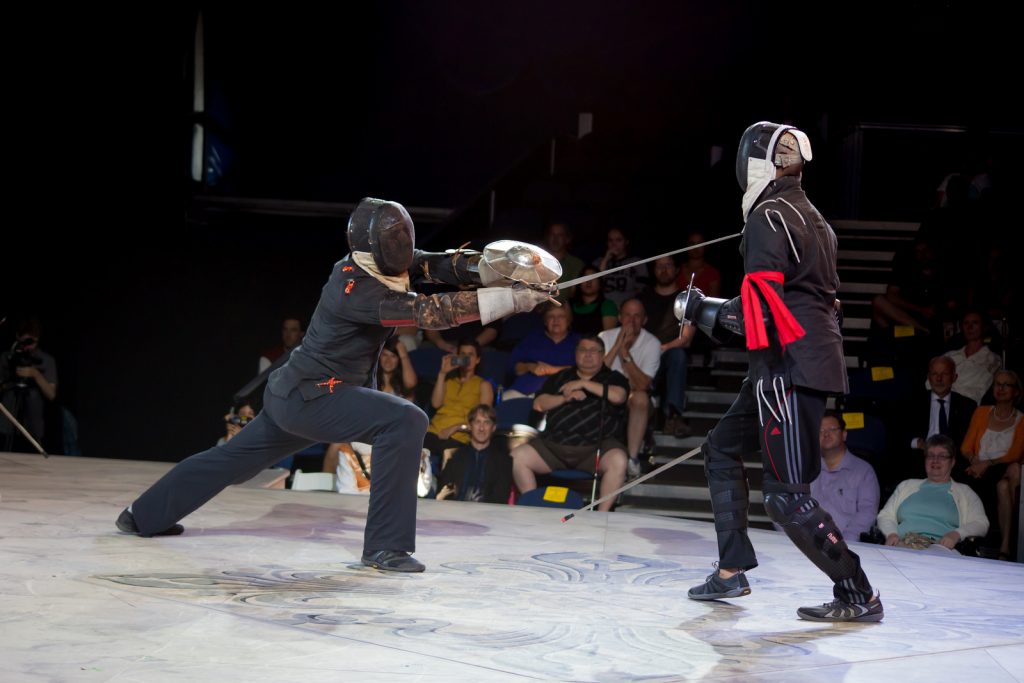The route from learning a new skill to pulling it off in combat is not a simple process. Though you can take many skills immediately into combat and make some progress, it is more effective to follow a formal process that targets the skill in a focused manner at each stage of its development.
Stage 1: Mechanical Learning
The goal at the mechanical stage is to build the initial motor program and create the ability to execute it in simple contexts.
Examples
- Learning the movement of a given parry and being able to execute it against a specific attack within a drill.
- Learning the movement of a thrust and being able to accurately strike a target.
Practice Tools
- Solo drilling - to establish motor patterns.
- Contextual drilling - to establish the function of the technique in response to a stimulus.
Stage 2: Tactical Integration
Once you can execute the skill and meet its objectives at least 80% of the time, you’re ready to bring it into a tactical environment. Tactical environments include:
Stimulus - A cued reason to conduct the technique (i.e. seeing an opening cues an attack and being attacked cues a defence).
Consequence - When you do your technique right, your objective is achieved. When you do it wrong, a clear negative outcome occurs (for example, if you fail a parry you get hit).
Choice - Tactical situations, like combat, require that you constantly assess and respond. Adding multiple stimuli adds to complexity and brings you closer to a full combat environment, while allowing you to still target new skills.
Techniques should be brought into a tactical environment of increasing complexity to help integrate them into your overall strategy.
Practice Tools
- Tactical Choice Drills - Drills that require you to select the correct technique from a limited set of options. For example, receiving a set of different attacks and having to choose the correct parries.
- Tactical Depth Drills - Drills that require you to execute two or more actions in a sequence. For example: parrying, counter-attacking, and then recovering.
- Timing Drills - Drills that require you to perform your action at the right moment. For example, striking as the opponent steps into measure or limiting the amount of time for a counter-attack within a parry-riposte drill.
As you gain more ability, add more choices, actions, or timing demands. Also, increasing the required speed of execution increases difficulty and moves toward the combat environment.
Stage 3: Combative Integration
When you can reliably fit a skill into a tactical framework in drilling, it’s time to open up the tactical environment to be more free-flowing.
Practice Tools
- Cued Sparring - Creating a sparring-like environment where your partner limits their actions to your target skills. In this way you can get significantly more exposure and practice of the new technique you’re working to integrate, while still having the flow and feeling of sparring.
- Slow Sparring - Fencing at a reduced speed gives you time to think and integrate a new skill without over-burdening your brain.
- Scaling Speed Sparring - Starting slow and gradually pushing up the speed of sparring can be used to take an integrated skill from a slower simulation environment to a faster combat environment.
- Restricted Sparring / Games - Using games that restrict what techniques are allowed in order to win can create an environment that allows for a hyper-focus on a target area.
Stage 4: Sparring, Assessment, and Correction
Sparring is the environment where you see how things are going and determine your training plan for best improvement. Trying to practice and improve a skill in combat tends to be less effective than practicing it through the tools given in previous stages. The number of repetitions of the target skill in free-form combat tend to be significantly lower and thus improvement is slower.
Practice Tools
- Fighting Recall Exercises - Fight and then re-enact, verbally or physically, the outcome of each match to develop your ability to recognize and diagnose technical and strategic challenges.
- Video Review - Setting up a video camera and watching the footage afterward can help you see how a new technique is performing from a third party standpoint.
- Training Journal - Keeping a written account of your improvement toward the target skill can help keep you on track and gain new insights.
Instructor Intensive
The Academie Duello June Instructor Intensive is nearly half-full. Join practitioners from all over the world in Vancouver from June 20th to 24th for 50 hours of both technical instruction and teaching methodology training for the rapier and longsword. The program is open to both students and instructors.
Read more and sign-up here.
